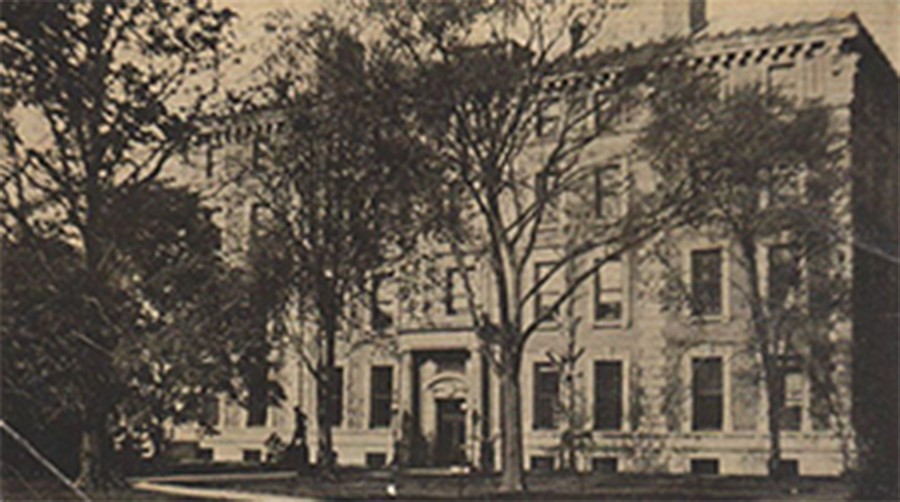The Legacy of Transfer Students at GS

Forty percent of students enrolled at GS transferred after attending community college. In honor of National Transfer Student Week, we are highlighting many of our students and alumni who transferred to GS, as well as offering insight into the unique role that community colleges play in making higher education possible for nontraditional students. Read more about their stories here.
NATIONAL TRANSFER STUDENT WEEK
In 1947, when the School of General Studies of Columbia University (GS) was founded, its student body resembled the country at large: men and women resuming their everyday lives after the interruption of World War II, and looking to pursue previously unavailable opportunities. Foremost among these new opportunities was the expanded access to higher education provided by the G.I. Bill, which led to the nation’s college-going population rising by over a million people from 1939 to 1949, an increase of 78 percent.1
Once the returning veterans cycled through and earned their degrees, GS remained a home for nontraditional students, but most of the nation’s leading colleges and universities generally went back to a version of their pre-war norm: educating a small coterie of students who were mostly male, often well off, almost exclusively white, and usually right out of high school.
Today’s college-going population looks quite a bit different, and although today’s elite universities have diversified their student body along the lines of gender, race and ethnicity, and socioeconomic background, they remain unrepresentative of the larger American society in one important respect. According to a 2015 report by the National Center for Education Statistics,2 74 percent of undergraduates nationwide can be classified as nontraditional students, a figure that has remained consistent for the past two decades. As a group, nontraditional students span a diverse array of stories and circumstances, but one commonality is that, for those who are returning to education after a break, the point of re-entry is often a two-year community college.
While GS was not designed specifically with community college transfer students in mind, our values allowed us to organically become the ideal access point for high-performing community college students to pursue a bachelor’s degree at one of the nation’s premier institutions.
A student’s time at a community college can be transformational. Community colleges can offer students the first exposure to an academic discipline that becomes a life’s work, or, for those who previously had adverse educational experiences, a chance to start anew. Perhaps the most significant role a community college can play is expanding a student’s sense of possibilities. A student might enroll intending to earn an associate degree, excel in their coursework, and, after a nudge from an advisor or induction into Phi Theta Kappa (PTK), the nationwide honor society for two-year colleges, wind up transferring to an Ivy League institution.
"I began to see that the gap between what I had achieved at community college and my potential future achievements was really in my thinking and my confidence, not in my ability. The door was there, and already open for me…I just had to be willing to step through," said Chris Thompson, GS student and PTK member.
GS has long worked to bring community college students to Columbia. When the school began to recruit nationally roughly two decades ago, one of the areas in which the admissions office focused its outreach was community colleges. With time, those efforts expanded considerably; in 2019, GS admissions representatives held over 240 events at 124 different community colleges. That emphasis has paid dividends: 47 percent of new GS students in recent years have transferred from a community college, half from schools in the tristate area and half from other schools throughout the country.
I began to see that the gap between what I had achieved at community college and my potential future achievements was really in my thinking and my confidence, not in my ability.
Of this cohort, 45 percent were the first generation in their family to attend college, while 61 percent received a federal Pell Grant, figures that underscore the crucial position community colleges occupy within the national higher-education ecosystem. As sites of access and affordability, community colleges serve as an open door, a fulfillment of the notion that higher education should be available to everyone who seeks it.
"While the School of General Studies was not designed specifically with community college transfer students in mind, our values as a School—understanding and appreciating the complexity and value of being a nontraditional student—allowed us to organically become the ideal access point for high-performing community college students to pursue a bachelor’s degree at one of the nation’s premier institutions," said Curtis Rodgers, Dean of Admissions.
Just as Columbia students benefit from receiving a rigorous, Ivy League education, the University in turn is enhanced by having some of the nation’s best and brightest community college alumni in its classrooms. These students contribute important perspectives that would otherwise be missing, and their presence in considerable numbers sets Columbia apart from its peer institutions. As the link between community colleges and the larger University environment, GS plays an important part in promoting access to the very best in higher education, a role that hearkens back to its founding mission as a school that brings Columbia to the world, and more of the world’s diversity to Columbia.
1Kim, Dongbin, and John L. Rury. “The Changing Profile of College Access: The Truman Commission and Enrollment Patterns in the Postwar Era.” History of Education Quarterly, vol. 47, no. 3, 2007, pp. 302–327. JSTOR, www.jstor.org/stable/20462176.
2 Radford, Alexandria Walton, Melissa Cominole, and Paul Skomsvold, RTI International. National Center for Education Statistics. U.S. Department of Education. Demographic and Enrollment Characteristics of Nontraditional Undergraduates: 2011-12. September 2015. https://nces.ed.gov/pubsearch/pubsinfo.asp?pubid=2015025.
